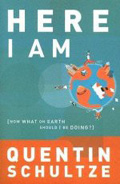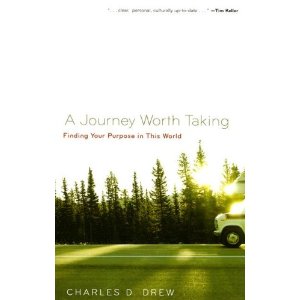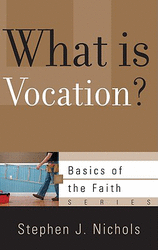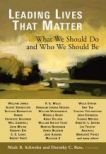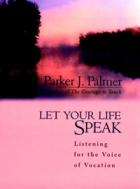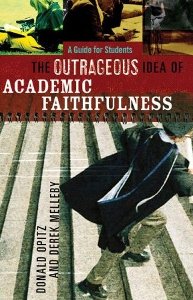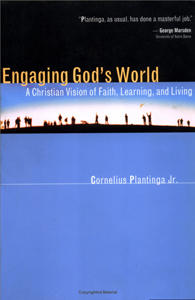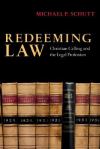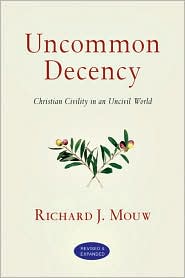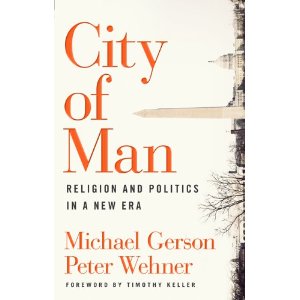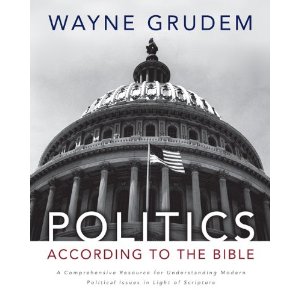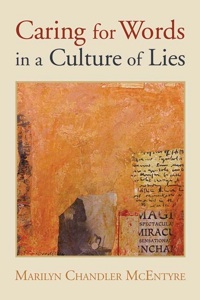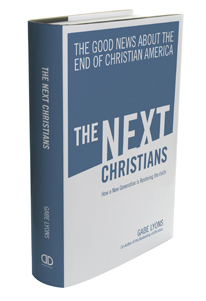Every now and then my hands just shake when I open a new book. I’ve been waiting for it and am like a kid at Christmas. Sometimes, the ga-ga-ga is worth it. This was one of those times. I was beside myself with two great new books, with strong content, with vivid, generous full-color artwork though-out. These two new art-themed books are not the kind that are in one of my favorite categories—the interface of faith and the arts, nurturing a Christian aesthetic, thinking about the creative process for people of faith, for artists and their fans. No, both of these are something else, although both are informed by the sort of wholistic Christian worldview that affirms a Godly perspective on all things aesthetic. Both quote Calvin Seerveld, Mako Fujimura and the like. But, again, they aren’t just for artists or their patrons. I’m tellin’ ya: these books are for you. And both are amazing, and will be important in your life.
And they are very, very different, in style, content, and intent. I will tell you about one today, and celebrate the other in a day or so. First, the new Nancy Pearcey.
Saving Leonardo by Nancy Pearcey (B&H Books; $26.99) is stunning on several levels. First, she is just so darn smart; she really knows a lot and has the ability to offer tons of important information, collating books and stories and theological ideas and historical movements all so very casually. I recall driving Nancy to her room at a nearby college after a long day of speaking engagements a few years ago and brainstorming with her about this very project. Could she, she wondered, develop the history of ideas, especially the “freedom” ideologies, that trickled down in reaction to the rationalism of the Enlightenment, through romanticism and into contemporary music and pop culture? Could she do this through a study of contemporary art? Could there be a fresh take on cultural criticism, worldview formation, intellectual history and popular discernment about “the spirits of the age” by way of what is sometimes called “art history”? Could she argue that the lack of morals prevalent in our fragmented culture can be traced to ideas that come to us through the arts? Why of course she could—we had been talking about these things that very day and night! She’s very sharp, diligent, discerning. I’ve been waiting for this ever since.
Nancy is a wide, wide reader, a studious and thorough thinker, and an energetic virtuoso at connecting the proverbial dots. And she is a glad popularizer. I so value those who can be both erudite and plainspoken, who can talk about medieval string quartets, 20th century Marxism, and popular, silly cartoon strips. I love this kind of a book, thoughtful and yet very enjoyable.
Having been influenced at a young age by the multi-talented Dutch theologian, philosopher, art
critic and jazz enthusiast Hans Rookmaaker—by way of a visit to L’Abri in Switzerland, the learning community for 60s bohemians and seekers led by Francis and Edith Schaeffer—Nancy understood clearly that ideas have consequences, that they “grow legs” and that cultural attitudes and artifacts are illustrations of the prevailing ideologies and ideas. Some ideas get traction within a culture and that these “ivory tower” ideas (that have trickled down to the person in the street through universities and mass media) have to be discussed in ways that ordinary people can understand and discern. She is a scholar and philosopher, but she is, like Schaeffer, a good listener and a lover of conversation. In a way, she is at heart an evangelist. She wants folks to grapple with ideas and their consequences, to see God amidst the struggles of movements and trends, books and artworks. She wants folks to be faithful in the real world. She wants people to be aware of the reasons for our ways of being, the nature of our social habits and values, and wants Christians (and others) to be able to hold these cultural customs up to the Light, and resist, if necessary.
To do this—to be the sons and daughter of Issachar from I Chronicles 12:23 who “understood the times and new what God’s people should do”—people simply have to know a bit about where ideas come from. How we got were we are. What some call the geneology of ideas. And a bit about how and why some ideas caught on and became common-place.
And, of course, sets of assumptions, presuppositions and ideas don’t just come directly to us from dusty philosophy texts or a tidy collection of abstract propositions about which we can calmly just agree or not. No, often ideas come along like baggage, and, in baggage, hidden in a film character or presumed in a news broadcast, or touted in the quick story of a TV ad. Culture of all sorts—from Fox News to the latest show at the MoMA, from art house movies to the latest video game— embodies, carries, reflects and helps shape the worldview and lifestylings of the culture.
In the very first chapter, Pearcey has an epigram, a famous line from the writer, Proust. “Through
art we can know another’s view of the universe.” And, then, the chapter title: “Are You An Easy Mark?” Hmmm. And the first sentences: “Hank the Cowdog is a humorous, homespun yarn for kids. Or it was, until the forces of political correctness got a hold of it.” She then tells the story of stealth secularism at the hands of the CBS “Storybreak” program and their treatment of the beloved John Erickson characters. She makes her point early on that ideas are shaping the arts and it isn’t always good.
The new shift in the ethos and nature of these simple Hank stories demanded by the CBS producers is just one of hundreds of examples that Pearcey offers, and her desire to communicate well with ordinary folks is well accomplished. Some of her stories are about just such very popular art—TV, cartoons, movies, fashion, rock music. But the bulk of the book is, in fact, a large and powerful and exciting history lesson in the shifts away from meaning, dipping in to matters as diverse as bio-ethics and modern art. (I’d say she almost covers too much!) But it is mostly about modern art.
The subtitle is important to understand her project and intent (and why she started with how CBS changed the old Cowdog stories: A Call to Resist the Secular Assault on Mind, Morals, and Meaning. Whew. Yep, she is mad about some stuff, greatly concerned, and channeling the often-misunderstood thesis of Hans Rookmaaker, from his controversial Modern Art and the Death of a Culture, a vivid study he wrote in the 70s (which is still in print; see the cover, a bit below.) Saving Leonardo: A Call to Resist… is more sprawling, interesting, practical, and in some ways indicting, than that seminal work. From Reformed philosopher Herman Dooyeweerd, who influenced Schaeffer and Rookmaaker, to her own ample study in the history and philosophy of science and culture, Ms. Pearcey, sees two main streams of thought coming out of the idolatrous French Revolution and its Enlightenment. This is a common story for many, and it could be nuanced endlessly, but as she reminds us, some have made an idol out of Reason and thinking, while others in reaction made an idol out of Emotion and feeling. Some might say that the one tradition yielded a fetish for control, mechanisms, systems, science and, well, the military industrial complex. The other tradition led to the counterculture with its fetish for freedom, emoting, disruption, anarchy, modern art, and well, the whole messed up free-sex/revolution that yielded drugs, promiscuity, and Manson. If one is the imperialism of modernity and the religion of technology, the other is the washout of post-modernity and the spirit of the inner vibe.
Sure, these are caricatures—and, to be clear, these are my descriptions, not Pearcey’s, who has over 300 pages and hundreds of illustrative pictures to make her reasoned points with more academic precision and historical documentation. Still, these two bad sides of the coin are the fruits of the secular Enlightenment and what some call “the modern project”—a separation of mind and heart, a disintegration in our knowing, rooted in the hard rationalism of that period. It seems to me that Pearcey’s former books—The Soul of Science: Christian Faith and Natural Philosophy, a co-authored book with Charles Colson called How Now Shall We Live and her remarkable and much-discussed Total Truth: Liberating Christianity from Its Cultural Captivity seemed to interact with and deconstruct the Enlightenment stream that lead to scientism, a philosophy of science under-girded by the secular philosophy of naturalism. She was taking on rationalism, and how it eroded meaning, truth, and morals. She called for a whole life faith–total truth, in every zone of life–and was thereby resisting the same sorts of things that Lewis fought in, say, The Abolition of Man.
Here she comes back, with the same passions and the same analysis: we are in trouble when we buy into–as the church largely has, from the pagan Greeks on, right through the Enlightenment and into postmodernism—a split level view of life, a dualism, reducing life to either “all head” or “all heart.” When we separate facts and values in a neat dichotomy (and she offers amazing quotes where folks say this, that we find scientific truth in one certain realm and values in a less sure realm) we are—regardless of what side of the dichotomy we favor—dividing up life in ways that are not Biblical and not sustainable. We lose our very humanity when we do this. This colorful romp through modern art history, paintings, sculpture, architecture, furniture-making, dance, novels, film, theater, and music is not only colorful and fun, my friends, it is deadly serious. This is, Pearcey insists, life and death stuff. Again, catch the full title as it is her cri du coeur in a nutshell: Saving Leonardo: A Call to Resist the Secular Assault on Mind, Morals, and Meaning. Note the cover illustrations: from DaVinci’s most famous Lisa to an abstract bit of cubism, to Pulp Fiction. Wow. Wow.
A reviewer more knowledgeable and careful than I could offer some critical feedback on her
evaluation of this artist or that movement, that philosophical assumption or this ethical position and whether it really is found in, say, Gauguin or Mark Rothko or the stunning outdoor art of Christo. Some of the claims she makes and interpretations may be a stretch, but–as a lay person who has pondered much of this for most of my adult life—I think she is usually quite insightful and informed and shows much understanding. Maybe she could be a bit more generous in her critique, maybe she overstates a bit. Still, I suspect that some folks will criticize her analysis just because they don’t like the direction of her critique. Or some just find it tacky to say “the emperor has no clothes” as if there is some virtue in covering up the dangerous ideas some of these esteemed artists and writers have had.
Frankly, though, some of what she says about many painters and artists is well-known: we have the quotes of the artists, the descriptions of their worldviews, the vivid prose they wrote. Why pretend it isn’t so? We don’t have to guess what Jack London thought about God and nature and meaning, or Stephen Crane, say; we can enjoy Woody Allen’s films and still express dismay about his sad lack of convictions. It isn’t helpful to dodge the implications of bad ideas even if the artworks that carry them are breath-taking. Non-linear novels (from Faulkner to Ulysses to Kafa, say) are created that way, and intend something (right?) and the views of life that are embedded in those narratives simply cannot be ignored. Walter Gropius and his Bauhaus movement created buildings and forged a built environment that was barbaric, and there are reasons for that. It is, it seems to me, nearly the old “elephant in the living room” to not talk about the religion, irreligion, faith or misplaced ideologies, the ideas and views, the virtue or perversity of artists. Nancy would say, I am sure, that it is usually actually honoring to the artist to take his or her work and worldviews seriously. Her goal is not to condemn art, let alone say that modern art is somehow bad, by naming the ideological stories that surround the work. (In fact, she notes, through God’s common grace, many of artists with the worst worldviews are the very best at their craft and skill. “Most artists vision is better than their worldviews” she notes, explaining that “they are sensitive to dimensions of reality that go beyond what is strictly permitted within the cramped categories of their secular worldviews.” Yes, these artists were often quite good, and as persons made in the image of God, they can be appreciated; they are to be cared for, never disrespected. So, again, “the call to resist” isn’t to say we cannot appreciate these significant pieces—just looking at the many art pieces she reproduces on the glossy pages of this handsome volume is a treat, more, a feast!—but it is to say that we are on dangerous ground if we do not learn to discern the ways these artifacts shape us. And be attentive. In an increasingly visual world, it is my view that this discipline of thinking critically about culture and the arts in particular, is more important than ever. Saving Leonardo, therefore, is very, very valuable, an ally of your fidelity to God as you walk through this world.
So, she follows Schaeffer’s and Rookmaaker’s (Dooyeweerdian-inspired) evaluation of the way in which cultures are shaped by loyalty to either Enlightenment rationalism or romanticism, head or heart, control or freedom, facts or values. These philosophers who name and explain these false dichotomies only come up a time or two, in her very good footnotes, though, and her incisive prose helps us cut to the chase. If one isn’t schooled in the history of ideas, this book will surely help, and I think would be a very important resource for you—a crash course, if you will, rooted in a solid Christian perspective. It is a great example of “taking every thought captive” as the Bible commands, learning to evaluate ideas (whether spoken directly by a philosopher, or indirectly in an artwork created by an artist influenced by that philosopher.) You will know more about your world after having spend a few weeks with this lavish book, and you will be better for it.
Even if one does have a bit of a liberal arts education, and knows a bit about the roots of Western culture, I am confident that her way of “seeing” various works will be illuminating, enjoyable, even exciting as the dots are connected and you have the joy of an aha insight. She handles lots of work in short order, keeping the book moving along, dipping in here and there, with pithy insights and helpful illustrations, always placing things in her basic narrative of how Western culture has developed along the lines of the dualisms between facts and values (and hence, the consequential drift towards secularization, meaninglessness, and human harm.) She covers all sorts of things, such as, say, the differences between the icons of the Byzantine world and the religious art of the Middle Ages and how the reformation allowed a new vision of God’s world: portraits, landscapes, warm paintings of daily life, such as the luminous work by Vermeer and the nearly sacred view of home life and ordinary work. She explains why the lovely work of French impressionism was so important (who knew?) and how a Christian view
of life was eroded by certain shifts in that period. She uses lively captions for her quick teachings about this kind of thing. For instance, there is “DaVinci versus Degas.” Or, she shows, for instance, the rise of the 19th century bohemian movement (“Artists go slumming” with reproductions of the transgressive Toulouse-Lautrec,) She explains the view of brute facts portrayed in A Farewell to Arms or the way “Duchamp throws it in our face” with his anti-art urinal installations, or how modern films like I (Heart) Huckabees are contemporary lessons in postmodern existentialism. Her quick run-down of films is illustrative (if way too brief, and perhaps overly eager to prove her point) and her survey of 20th century novels is fantastic (again, if a bit too succinct.) Her resistance to what she calls “Christian sentimentalism” is powerful as she invites us to a robust effort to “re-moralize” our culture.
She ends with the following paragraphs, citing a favorite quote of Francis Schaeffer, “as surprising today as it was back in 1974.”
One of the greatest injustices we do to our young people is to ask them to be conservative.
Christianity is not conservative, but revolutionary.” The technical meaning of conservative is to conserve the status quo. But “we must teach the young to be revolutionaries, revolutionaries against the status quo.” We are called to revolt against the false idols and the power they exert over our minds and hearts. Christian should be on the front lines fighting to liberate society from its captivity to secular worldviews.
And who is better equipped than artists to communicate that liberating message—to jar the church out of its complacency, tear away the veil of religious euphemism, expose hypocrisy and self-righteousness, and create works that reveal the breath-taking beauty of salvation?
Like Bach, today’s artists could well inspire a spiritual revival, and in turn spark a global cultural revolution.
I am not alone in hoping this book is widely read. Leland Ryken calls her “unsurpassed” and says “the magic continues with this book.” J.P. Moreland calls it “a tour de force.”
Makoto Fujimura, the New York wonder-kid doing abstract art in Manhattan, founder of the International Arts Movement (IAM) and art critic himself writes of it,
A feast for the mind and for the eye. Nancy Pearcey not only is a trustworthy guide for a nuanced discussion on the relationship between culture and the gospel, but she is a gifted teacher as well…Saving Leonardo is a rare precious gift to the churches and universities alike.
Or, get this, from worldview guru and thoughtful writer, James Sire:
Nancy Pearcey has done it again and better than ever. She has taken the complex sophistication of the best cultural analysis and laid it out for any person to grasp, enjoy and use to live out their daily lives honoring Christ. An astounding accomplishment.
It is my sense that there will be much discussion about this, it will be criticized in some quarters and there should be important dialogues about it. Kudos to the publisher for the good design, serious paper and generous art reproductions (I can’t imagine the elves working behind the scene to get this produced.) It is a truly gorgeous book. Its main concerns are urgent, and the brilliant ways in which she uses the flow of ideas from the secularizing forces of the Enlightenment through the romantics–so important nowadays among artsy youth culture—and into the postmodern era, is just so very helpful. Agree or not with her full approach or any particular detail, this is a must-read. Don’t delay. Start a book group, a study club or class. We have it a $5.00 off, but could offer a greater discount for classes. Thanks!
Saving Leonardo: A Call To Resist the Secular Assault on Mind, Morals, & Meaning
Nancy Pearcey (B&H Books) regularly $26.99 Now on sale for $21.99. Call or order on line.
BLOG SPECIAL
regularly $26.99
special price $21.99order heretakes you to the secure order form pageinquire hereif
you have questions or need more information
Hearts & Minds 2345 East Main Street Dallastown, PA 17313 717-246-3333
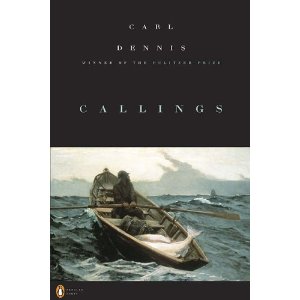 How well he’s doing, whether he’s liable, say,
How well he’s doing, whether he’s liable, say,

